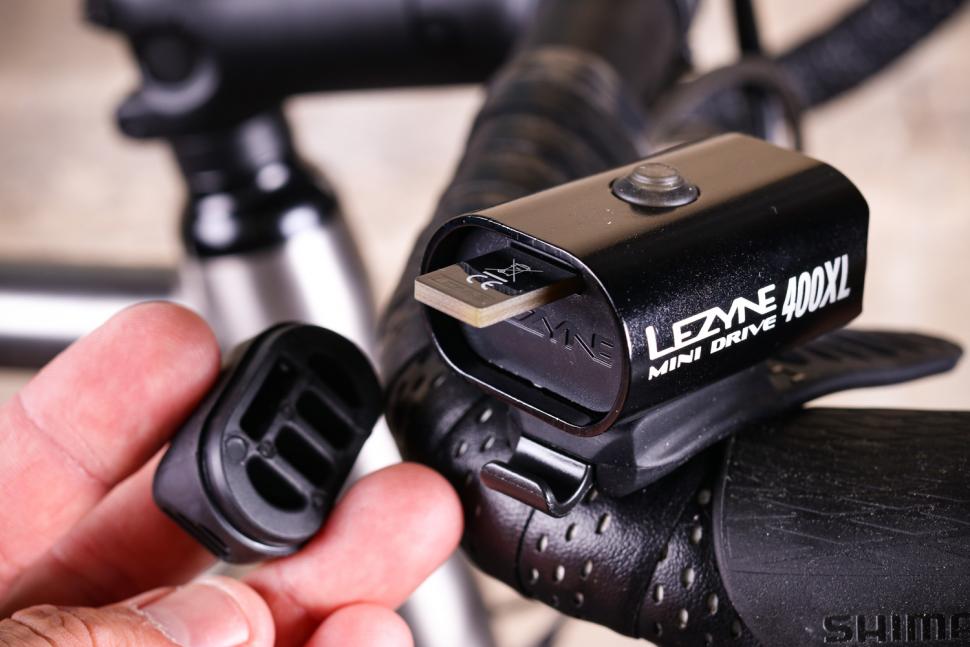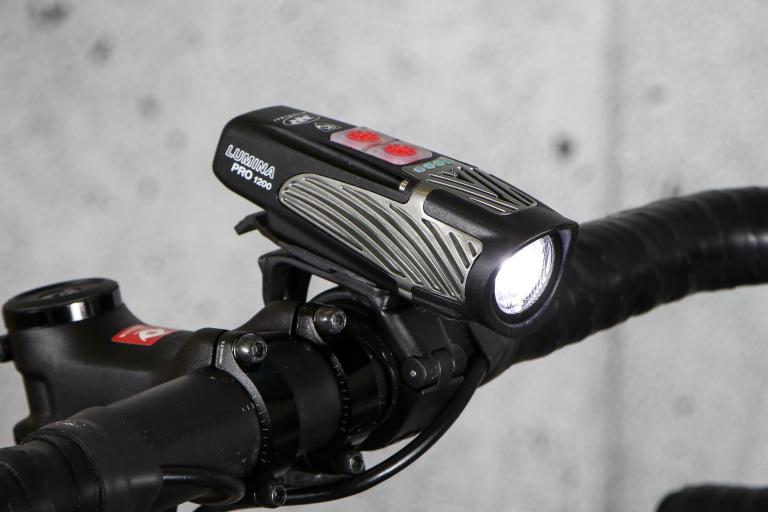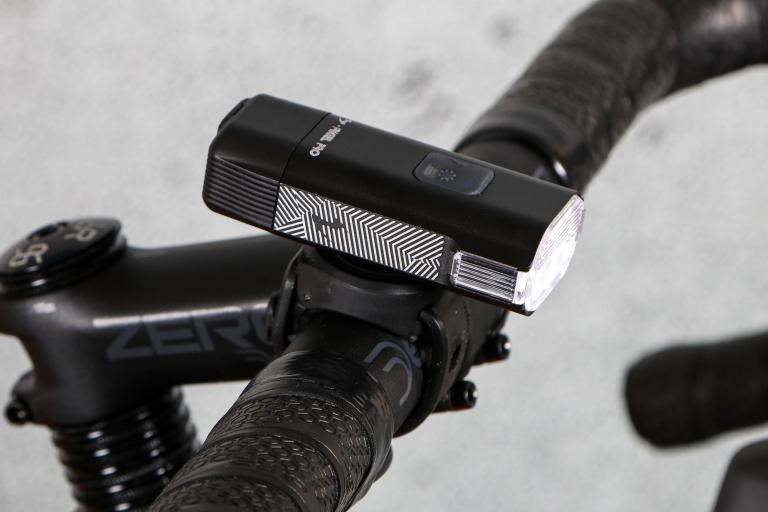- News
- Reviews
- Bikes
- Components
- Bar tape & grips
- Bottom brackets
- Brake & gear cables
- Brake & STI levers
- Brake pads & spares
- Brakes
- Cassettes & freewheels
- Chains
- Chainsets & chainrings
- Derailleurs - front
- Derailleurs - rear
- Forks
- Gear levers & shifters
- Groupsets
- Handlebars & extensions
- Headsets
- Hubs
- Inner tubes
- Pedals
- Quick releases & skewers
- Saddles
- Seatposts
- Stems
- Wheels
- Tyres
- Tubeless valves
- Accessories
- Accessories - misc
- Computer mounts
- Bags
- Bar ends
- Bike bags & cases
- Bottle cages
- Bottles
- Cameras
- Car racks
- Child seats
- Computers
- Glasses
- GPS units
- Helmets
- Lights - front
- Lights - rear
- Lights - sets
- Locks
- Mirrors
- Mudguards
- Racks
- Pumps & CO2 inflators
- Puncture kits
- Reflectives
- Smart watches
- Stands and racks
- Trailers
- Clothing
- Health, fitness and nutrition
- Tools and workshop
- Miscellaneous
- Buyers Guides
- Features
- Forum
- Recommends
- Podcast
review
£30.00
VERDICT:
Reasonably priced, compact, easy to use – ideal for daily commuting
Weight:
84g
Contact:
At road.cc every product is thoroughly tested for as long as it takes to get a proper insight into how well it works. Our reviewers are experienced cyclists that we trust to be objective. While we strive to ensure that opinions expressed are backed up by facts, reviews are by their nature an informed opinion, not a definitive verdict. We don't intentionally try to break anything (except locks) but we do try to look for weak points in any design. The overall score is not just an average of the other scores: it reflects both a product's function and value – with value determined by how a product compares with items of similar spec, quality, and price.
What the road.cc scores meanGood scores are more common than bad, because fortunately good products are more common than bad.
- Exceptional
- Excellent
- Very Good
- Good
- Quite good
- Average
- Not so good
- Poor
- Bad
- Appalling
Lezyne's Mini Drive 400XL is a compact, bright and easy-to-charge LED light for commuting and backup duties.
- Pros: Compact, easy to use
- Cons: Limited run-time in 400-lumen mode
This is a light to be seen by rather than to see where you're going, but if you do find yourself on an unlit road it casts a usable beam with enough brightness from its 400-lumen highest mode that you can usefully make out the way ahead.
The Lezyne is perfect for daily commuting through towns and suburban environments with a few unlit roads. I wouldn't rely on it as the main beam for countryside commuting, but it makes a very good backup in such circumstances.
The lens encasing the twin LEDs has a useful amount of side visibility, but it could easily be expanded to further increase attention-grabbing of other road users.
Battery life, indicated by the LED in the main power button from green through to flashing red, is generally very good. You can get up to 20 hours' run-time if you use the 15-lumen mode, 5hrs on 75 lumens and 2hrs 30mins on 150 lumens, but just 1hr in the 400-lumen mode. These are the claimed times, but in testing run-time is pretty honest; run on max power it lasted just over an hour before a small red warning light in the on/off button started flashing. At this point it powered down to the eco mode, with flash modes still available. That's preferable to the light going completely flat during a ride.
An optional Overdrive Race mode lets you alternate between the 400-lumen Blast and 75-lumen Evo modes only. That's useful on dark unlit roads – brighter for seeing where you're going and dimming for oncoming cars or if you find yourself on less dark roads. It also helps you eke out the battery life of the most powerful mode; it's a shame the battery doesn't deliver more run-time on the full fat 400-lumen mode.
Alternating between the different modes or using one of the flash settings will get you comfortably through a week of regular riding or commuting. I managed five days of riding without having to top up the battery.
We're seeing lights being used during the daytime much more, especially when it's overcast and rainy. For this scenario, the Mini Drive 400XL packs a Daytime Flash mode using the full 400 lumens, with 7hrs of run-time.
A single button operates the Mini Drive 400XL, turning it on and off and cycling through the eight modes. One neat feature is the memory that means the light turns back on in the same mode you were last using, which saves a lot of time and button pressing.
Charging the Mini Drive 400XL couldn't be easier: no scrabbling for the correct cable, instead it plugs directly into a USB port. A watertight rubber cap easily pops off to reveal the USB connection. There are some reports of this rubber end cap easily falling off, but I didn't find that to be the case.
Charge time is 2hrs 30mins to full, but you can get a reasonable amount of run-time with less charging time.
A large rubber band hooks the Lezyne onto the handlebar easily. It's nice and stable in use and doesn't bounce around over rough roads. The mount is integrated into the base of the light so when you remove it, you leave the handlebar free of vacant mounts.
Construction is very good, and easily up to Lezyne's usual standards. The main unit is CNC machined aluminium with durable rubber and plastic components contributing to a light and rugged design. I've dropped it a few times and it's all good.
It's reasonably priced and packs a decent punch. If you just want a compact, bright and easy to use light for daily commuting in urban settings, it's easy to recommend.
> Buyer's Guide: The best front lights for cycling
I'd say it's good value too. You can get a bit more oomph for unlit commuting – the Ravemen LR500S costs £34 and packs 500 lumens, plus it runs for a more useful 1hr 54mins – but it isn't as compact or simple to charge.
It's also cheaper than a few 300-lumen lights, such as Infini's Tron 300, which is nicely compact with some similar features, but costs £34.
Sticking with Lezyne, if you want more brightness you could have a look at the Lite Drive 800XL for £57.
Verdict
Reasonably priced, compact, easy to use – ideal for daily commuting
road.cc test report
Make and model: Lezyne Mini Drive 400XL
Size tested: 400 lumens
Tell us what the light is for, and who it's aimed at. What do the manufacturers say about it? How does that compare to your own feelings about it?
Lezyne says: "Compact cycling light with a machined aluminium body. A bright, single LED system provides up to 400 lumens and a Daytime Flash mode. Battery runtime has increased by 2.5 hours for up to 20 hours of runtime. It features eight output modes and cut-outs for side visibility. Charging is simple with an integrated cable-free USB stick. It's available in Black & Silver and securely straps to a variety of handle bar shapes and sizes."
Tell us some more about the technical aspects of the light?
Lezyne lists:
Max Lumens: 400 lumens.
Weight: 83g.
Max Runtime: 20 hours.
Recharge Time: 2.5 hours.
Colours: Black, Silver.
Rate the light for quality of construction:
8/10
Solidly built.
Rate the light for design and ease of use. How simple was the light to use?
9/10
Super-easy to use.
Rate the light for the design and usability of the clamping system/s
9/10
A complete breeze to set up and get running.
Rate the light for waterproofing. How did it stand up to the elements?
8/10
No issues during heavy downpours or the hose-pipe test.
Rate the light for battery life. How long did it last? How long did it take to recharge?
7/10
It doesn't last all that long on the brightest mode, but the lower brightness and flash modes eke out the battery to a useful range.
Rate the light for performance:
8/10
Rate the light for durability:
8/10
Rate the light for weight:
8/10
Rate the light for value:
7/10
Against other rivals at this price – and slightly higher – it's good value when you take into account the smart design, compact shape and ease of use.
Tell us how the light performed overall when used for its designed purpose
Perfect for daily commuting, and a good one to use in the daytime and as backup to a brighter main light.
Tell us what you particularly liked about the light
Easy to fit and remove, and the integrated USB stick.
Tell us what you particularly disliked about the light
The 400-lumen mode run-time isn't longer.
Did you enjoy using the light? Yes
Would you consider buying the light? Yes
Would you recommend the light to a friend? Yes
Use this box to explain your overall score
It scores well across the board; it's only the slightly limited run-time in the brightest mode that holds it back.
About the tester
Age: 31
I usually ride: My best bike is:
I've been riding for: 10-20 years I ride: Every day I would class myself as: Expert
I regularly do the following types of riding: road racing, time trialling, cyclo-cross, commuting, touring, mountain biking
David worked on the road.cc tech team from 2012-2020. Previously he was editor of Bikemagic.com and before that staff writer at RCUK. He's a seasoned cyclist of all disciplines, from road to mountain biking, touring to cyclo-cross, he only wishes he had time to ride them all. He's mildly competitive, though he'll never admit it, and is a frequent road racer but is too lazy to do really well. He currently resides in the Cotswolds, and you can now find him over on his own YouTube channel David Arthur - Just Ride Bikes.
Latest Comments
- Another_MAMIL 0 sec ago
What did the car driver do wrong? They went offside (giving the cyclist ample room) when overtaking. I'd have been happy to be overtaken like this....
- billymansell 17 min 37 sec ago
This takes me back. I remember auxetic foam being demonstrated on Tomorrow's World back in the 1980s.
- chrisonabike 38 min 40 sec ago
Aha! More predict and provide again!...
- stonojnr 49 min 58 sec ago
It's simply that folding bikes are least likely to be DIY battery jobs, and that the DIY battery jobs are the most likely to catch fire. ...
- Rendel Harris 1 hour 23 min ago
Geraint Thomas, six appearances including the year he won the Tour. Bradley Wiggins, eight appearances including the year before he won the Tour....
- hawkinspeter 1 hour 23 min ago
I do indeed.
- Jakrayan 1 hour 33 min ago
The article states the toerags were youths, so unfortunately there probably won't be any real punishment. But at least the police are appealing for...
- David9694 1 hour 59 min ago
Residents awoken by car crashing into Almshouse garden...
- Rapha Nadal 2 hours 1 min ago
I used to work in a bikeshop which sold Litespeed and remember riding one of the earlier versions of the Ghisallo. It was so flexy that when i...
- Circles 3 hours 21 min ago
It would help if everyone stuck to the ' keep left, like on the road' rule - it helps our children learn









Add new comment
16 comments
A quick Google for "Lezyne rubber bung" shows the amount of retailers selling the things and amply demonstrates that there must be a healthy market for them!
I lost my rubber end cap too within about 6 weeks of getting the light. Survived a couple of years of all weather commuting without the cap on though, don't think rain was even what made it die in the end.
A li-ion battery is stressed the most during the top and bottom 20% of its charging range. The widely accepted recommendations are:
1. try not to let it go below 20% regularly
2. charging to 80% usually extends its life more than charging to 100%
3. when storing it for a period of time then leave it partially charged, around 40-50%
My good batteries tend to come with warnings about not fully discharging them, and using them a bit and fully charging at least every few months. Another reason to ride with them on during the day, flashing in bright sunshine if nothing else, on the roads mind.
1hour runtime at 400lms 'when it's new'.. I often wonder how long lights would last after a year of not being cycled or discharged enough, effectively as most people would do by just topping up the charge.
Are there any light reviews that look at battery degradation after a year of commuter usage?
Li-ion and li-polymer batteries do not have a "memory" effect and there is zero harm in using them over partial discharge cycles. There is no advantage in them being discharged "enough".
I mostly used a wall-mounted USB socket like you get with smartphones to charge the light up, worked just fine, but hear you about issues plugging into a laptop
Not yet had the rubber end cap fall off. Seems firmly attached to me
Happened to me twice. The second time I didn't find it again.
Weird, I've had a rear light with the same cap for 3 years and had no issues. Going to be more careful with mine from now on
I've had two of these (well Hecto, but same thing) for several years and never had the cap fall off
I also lost the rubber end cap and had to buy a spare part. I usually love Lezyne products but this design needs a rethink. There's nothing wrong with a USB port.
Was thinking about this today as I had to charge my rear light that this 'stick' connector. I can't think of a reason why this would be better than the usual USB/micro USB port and cable.
Stupid design. The rubber end cap can sometimes fall off and once it does you'll probably not notice until it's too late as chances are you'll be riding in the dark.
Totally agree. Idiotic design. They will sell you a replacement for a fiver. No thanks, I now buy my lights from Exposure.
"it plugs directly into a USB port"
That looks pretty awkward. I can just about see it working in a laptop USB port, pumping out what, 500mA? And even then what happens if the USB ports don't magically line up, leaving either the light cantilevered out of the port unsupported, or itself lifting the laptop clear of the desk? And how do you go about using a more powerful charger?
I'm guessing whatever you do you'll end up searching for a lead. Only this way it will be one you don't have.
The USB 'stick' won't fit every computer neatly but I suspect you might be blowing this issue out of proportion. I have a Micro Drive rear light that uses the same type of connector; I charge it in a wall socket using an old Alcatel 2A mobile phone charger. I find this easier than getting the micro USB lead into the socket on my front lights.
A more important question is whether a compact unit like this has enough run time for your commute or evening/night rides to avoid having to charge it daily. I'd suggest that it's more of a good 'be seen by' light or as a backup than as your main light for unlit roads at night.